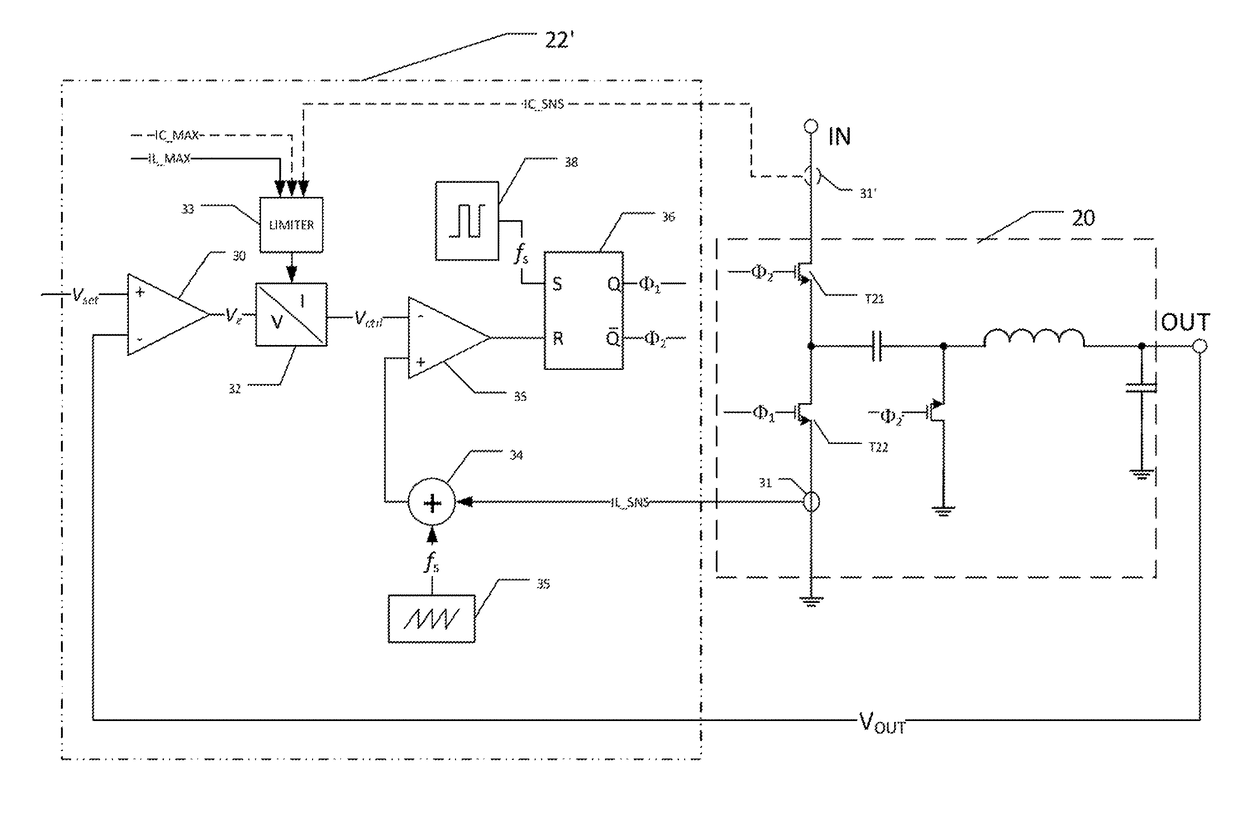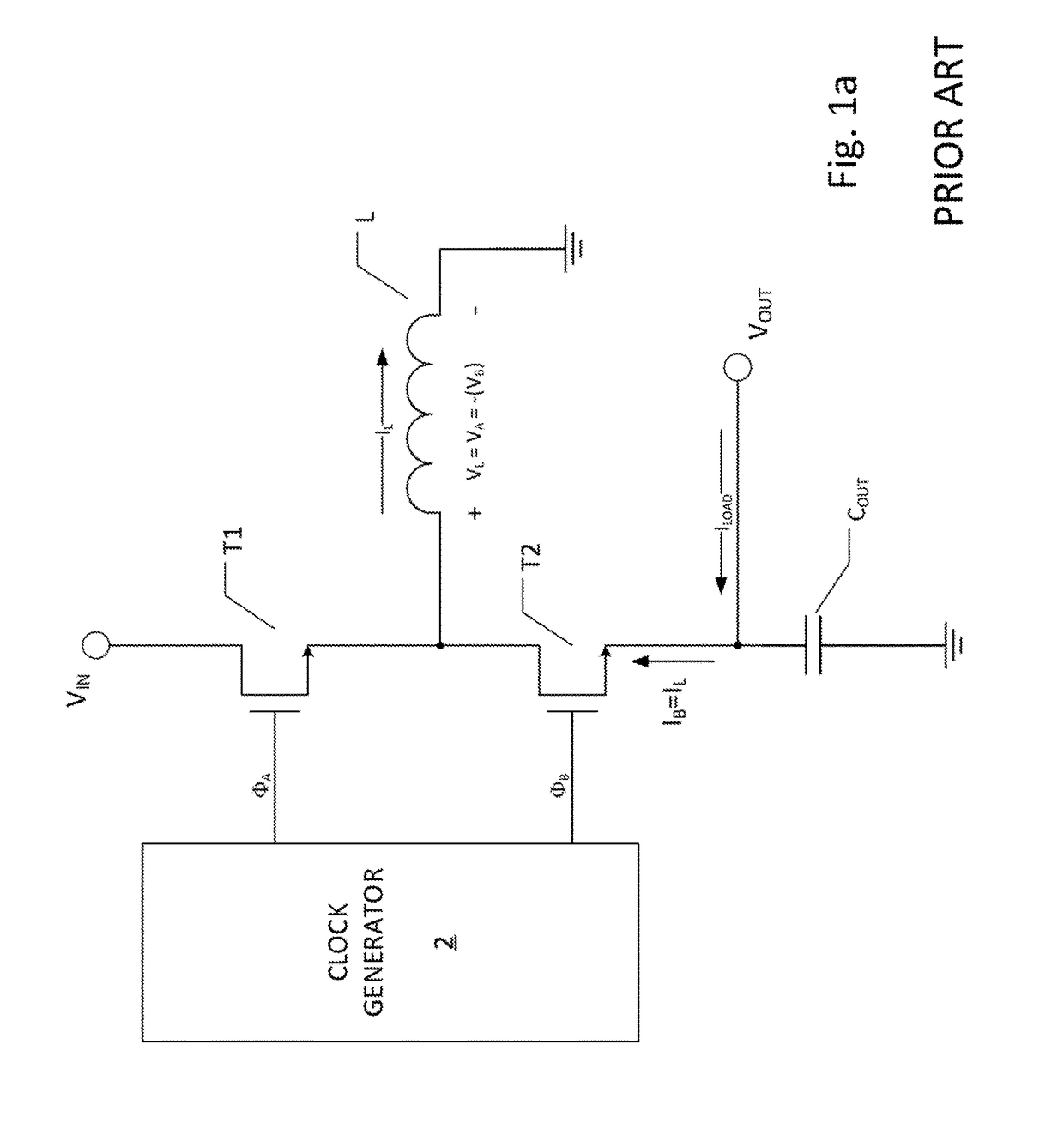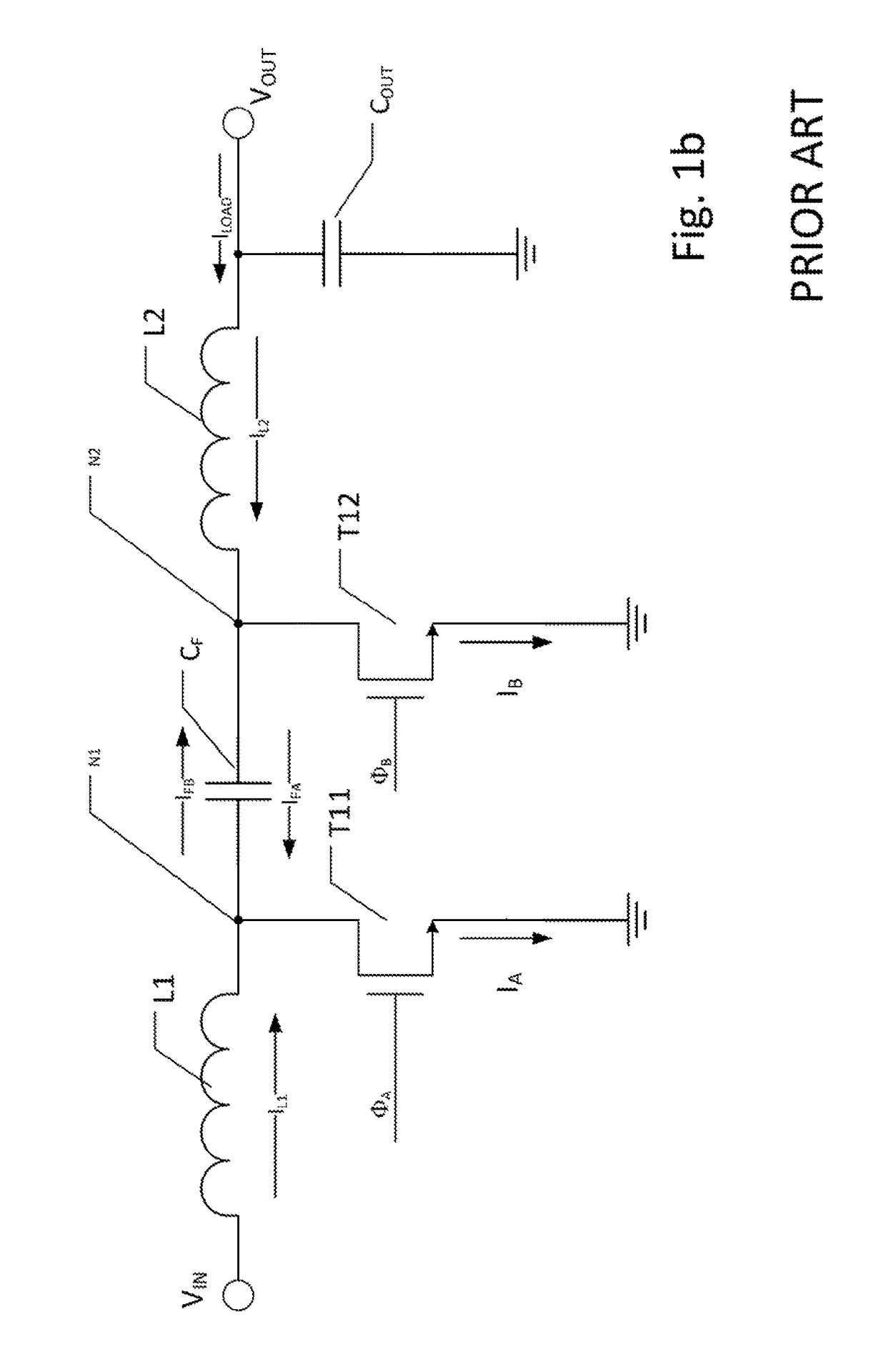Hybrid capacitive-inductive voltage converter
a capacitive-inductive voltage converter and hybrid technology, applied in the field of voltage converters, can solve the problems of discontinuous input current and output current, undesirable in many applications, and high induced noise in the system, and achieve the effect of rapid transient response and high control bandwidth
- Summary
- Abstract
- Description
- Claims
- Application Information
AI Technical Summary
Benefits of technology
Problems solved by technology
Method used
Image
Examples
Embodiment Construction
[0028]The one or more embodiments described in this specification are implemented into a voltage converter of the inverting buck type suitable for implementation in an integrated circuit, as it is contemplated that such implementation is particularly advantageous in that context. However, it is also contemplated that concepts of this invention may be beneficially applied to other applications, for example as implemented as a discrete circuit. Accordingly, it is to be understood that the following description is provided by way of example only, and is not intended to limit the true scope of this invention as claimed.
[0029]Attributes of switched-mode DC voltage converters that are desirable in many system implementations include low ripple in the output DC voltage, and rapid transient response of the converter to changes in the desired output voltage. Examples of applications that require these attributes of negative polarity DC voltages include high-performance analog circuits such a...
PUM
 Login to View More
Login to View More Abstract
Description
Claims
Application Information
 Login to View More
Login to View More - R&D
- Intellectual Property
- Life Sciences
- Materials
- Tech Scout
- Unparalleled Data Quality
- Higher Quality Content
- 60% Fewer Hallucinations
Browse by: Latest US Patents, China's latest patents, Technical Efficacy Thesaurus, Application Domain, Technology Topic, Popular Technical Reports.
© 2025 PatSnap. All rights reserved.Legal|Privacy policy|Modern Slavery Act Transparency Statement|Sitemap|About US| Contact US: help@patsnap.com



